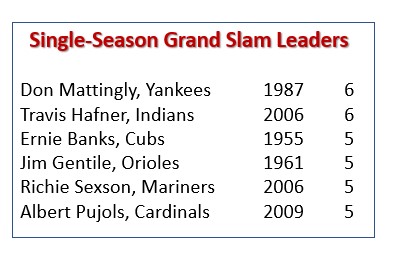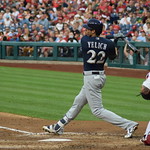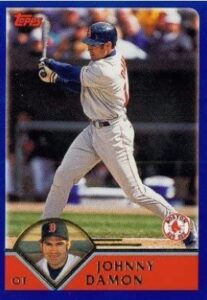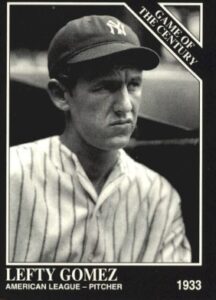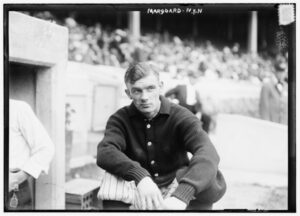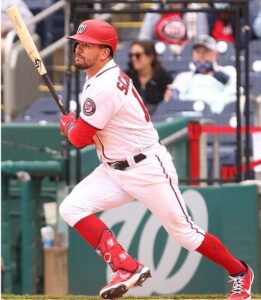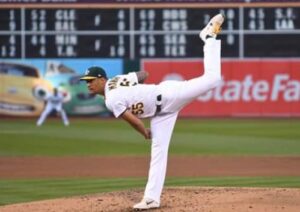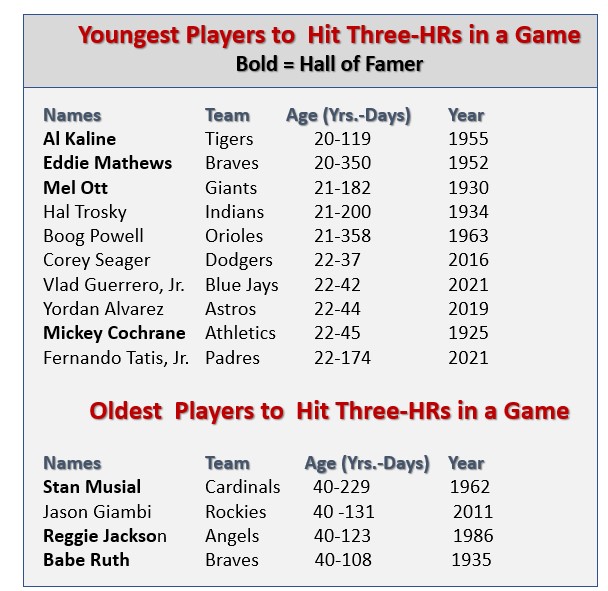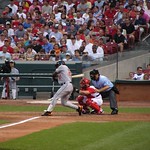
Photo by Ryosuke Yagi 
On this date (July 27) in 1998, Cubs’ RF Sammy Sosa launched his 39th and 40th homers of the season – as the Cubs topped the Diamondbacks 6-2 in Arizona, with Sosa driving in all six runs. Just as significantly, the second of those homers – in the eighth inning off Alan Embree – was a Grand Slam. It came in Sosa’s tenth MLB season and was the 247th homer of his career. It was also Sosa’s first-ever Grand Slam, giving him (more proof of #InBaseballWeCountEverything) the MLB record for the most home runs ever for a player before hitting his first Grand Slam. After waiting more than nine seasons, 1,164 games and 246 home runs to hit his first round tripper with the bases full, Sosa’s next Grand Slam came just six innings later – in the fifth inning of the Cubs’ July 28 game against the Diamondbacks. This time off Bob Wolcott (as the Cubs won 7-5). Sosa ended his career with nine Grand Slams among his 609 regular-season home runs.
Now on the very same day that Sosa hit his first MLB Grand Slam, approximately 980 miles away, Tyrone Horne of the Double A Arkansas Travelers became the first (and still only) professional player to complete a home run cycle (solo, two-run, three run and Grand Slam home run all in the same game). He accomplished the feat on the road against the San Antonio Mission – in a 13-4 Arkansas win. For the full story on Horne and career, click here.
Well, these July 27th events, centering on Grand Slams, led Baseball Roundtable to dig a little deeper into “Ducks-Full Dingers.”
Did you know, for example, that hitting two Grand Slams in a game is even rarer than hitting four home runs in a contest or pitching a perfect game.? Here’s the list.
 And, here are a few tidbits about those two-Grand Slam games (you can check the details like teams and dates off the chart above):
And, here are a few tidbits about those two-Grand Slam games (you can check the details like teams and dates off the chart above):
- Fernando Tatis (Sr.) is the only player to hit two Grand Slams in one inning. They were the first two Grand Slams of his MLB career. Tatis’ eight RBI in an inning also remain an MLB record.
- Twelve of the thirteen two-Grand Slam games were accomplished on the road. Only Nomar Garciaparra hit his pair of bases-full blasts in front of a home crowd.
- The Red Sox’ Bill Mueller is the only player to hit a Grand Slam from both batter’s boxes in the same game – and he hit them in the consecutive innings. In the seventh inning, right-handed off Rangers’ southpaw Aaron Fultz and, in the eighth inning, left-handed off righty Jay Powell.
- The first National Leaguer to hit two Grand Slams in a game was Braves’ pitcher Tony Cloninger. He also threw a complete-game, seven-hitter that day (three runs, two walks, five strikeouts).
- Rudy York and Fernando Tatis are the only two on the list to hit both Grand Slams off one pitcher. The Cardinals’ Tatis hit both of his off the Dodgers’ Chan Ho Park (and, of course, in the same inning – the third). The Red Sox’ York hit both of his Slams off the Athletics’ Ted Shirley (one in the second inning an done in the fifth).
- Tony Lazzeri, Jim Tabor, Nomar Garciaparra and Bill Mueller each had three home runs in their two-Grand Slam Games.
Career Leaders in Grands Slams
Alex Rodriguez 25
Lou Gehrig 23
Manny Ramirez 21
Eddie Murray 19
Willie McCovey 18
Robin Ventura 18
Leader among active players: Albert Pujols – 15
A couple of single-season Grand Slam tidbits:
- Yankee Don Mattingly’s single-season record six Grand Slams in 1987 were the only Grand Slams of his 14-season MLB career.
- When the Orioles’ Jim Gentile hit a then-record-tying five Grand Slams in 1961, everyone of his five bases-loaded blasts came in a game in which the Baltimore starter was Chuck Estrada. Gentile, in face, hit only one other Grand Slam in his career – in a game started by (you guessed it) Chuck Estrada.
That’ll Do in a Pinch
Four players share the record for most career pinch-hit Grand Slams (three) – Ben Broussard (Indians/Mariners); Willie McCovey (Giants); Ron Northey (Cardinals/Cubs); and Rich Reese (Twins).
A trivia tidbit on Reese. His record-tying three pinch hit Grand Slams were the only Grand Slams in his 10-season MLB career (866 games/2225 plate appearances/200 pinch-hitting appearances).
Let’s Get this Party Started
While 126 players have homered in their first MLB at bat, only four of those long balls were Grand Slams. The players with Grand Slams in their first at bat include: Bill Duggleby (Phillies – 1898); Jeremy Hermida (Marlins – 2005); Kevin Kouzmanoff (Indians – 2006); Daniel Nava (Red Sox – 2010). The last two of those, poked those four-run shots on the very first MLB pitch they ever faced.
- Kevin Kouzmanoff started his first MLB game at DH (batting seventh) for the Indians on September 2, 2006. The opponents were the Rangers (in Texas), with Edison Volquez on the mound. In the top of the first, Kouzmanoff came to bat with the sacks full and two out – and rapped the first pitch from Volquez over the CF fence for a Grand Slam. It was his only hit in four at bats, as the Indians triumphed 6-5. Kouzmanoff played seven MLB seasons (2006-2011, 2014). He hit .257-87-371, with three Grand Slams.
- Daniel Nava made his first MLB start as a member of the Red Sox on June 12, 2010. He was batting ninth and playing left field, as the BoSox faced the Blue Jays (and starter Joe Blanton) in Fenway. In the bottom of the second frame, Nava came to bat for the first time in an MLB game – with the based loaded, no outs and the Red Sox up 1-0. He hit the first Blanton offering deep to RF for a Grand Slam. Nava had a home run and a double in four at bats, as the Red Sox won 10-2. Nava played seven MLB seasons (2010, 2012-17), hitting .266-29-206 in 589 games. He hit two Grand Slams.
The Ultimate Slam
I have often said “In baseball we count everything,” and, if it’s not already counted, we find a way to make it countable. Hence, the “Ultimate Grand Slam” – a walk-off Grand Slam in the bottom of the final inning of a game when your team trails by three runs. The “count” shows thirty such Ultimate Grand Slams – by thirty different players. A handful stand out.
- Babe Ruth, Jason Giambi and Ryan Roberts notched Ultimate Slam in extra innings.
Ruth hit his in the bottom of the tenth of a September 24, 1925 game against the White Sox at Yankee Stadium. The game had been tied 2-2 after nine frames, the White Sox tallied three in the top of the tenth, before Ruth’s Ultimate Slam put it away for New Yorkers 5-4.
Giambi hit his in the bottom of the fourteenth inning of a May 17, 2002 game between his Yankees and the Minnesota Twins. The game was tied at nine after nine. The Twins, like the White Sox above, plated three runs in the top of the 14th, before the Giambi Ultimate Slam gave New York the 13-12 win,
Roberts hit his Ultimate Slam in the tenth inning of a September 27, 2011 matchup between his Diamondbacks and the Dodgers. The game was knotted at 1-1 after nine innings, when the Dodgers exploded for five runs in the top of the tenth. The game looked safely packed away as Arizona reliever Blake Hawksworth retired the first two batters in the bottom of the inning. What followed was a single by RF Cole Gillespie, a single by C Miguel Montero (Gillespie going to third); a walk to CF Chris Young; PH John McDonald safe on an error with one run scoring; a pitching change (Javy Guerra for Hawksworth); a walk to 2B Aaron Hill forcing in a run (leaving the base loaded and the score 6-3); and, finally, Roberts’ Ultimate Slam – giving the Diamondbacks a 7-6 win, with six runs scoring after the Dodgers had the Diamondbacks down to their last out, with the bases empty.
- For sheer excitement no Ultimate Slam can beat the one Roberto Clemente hit on July 25, 1956. The Pirate were trailing the Cubs 8-5, when Clemente came to the plate with the bases loaded and no outs. Facing Jim Brosnan, Clemente drove a high-and-inside pitch off the light standard in left field. As the ball ricocheted off the light standard and rolled along the warning track, all three runners scored – and then a sliding Clemente, beat the relay throw, and slid across the plate. Note: Clemente ran through the coach’s stop sign at third base. It remains the only inside-the-park Ultimate Slam.
- 2011 is the only year with three Ultimate Slams (Travis Hafner (Indians); Brian Bogusevic (Astros); Ryan Roberts (Diamondbacks).
Primary Resources: Baseball-Reference.com; Baseball-Almanac.com
Baseball Roundtable Disclaimer: The MLB records referenced in this (and previous) posts have the potential to change (primarily additions) as Major League Baseball recognizes and fully incorporates Negro League records from 1920-48 into the MLB record book.
BASEBALL ROUNDTABLE ON THE TOP 100 BASEBALL BLOG LIST
 Baseball Roundtable is on the Feedspot list of the Top 100 Baseball Blogs. To see the full list, click here.
Baseball Roundtable is on the Feedspot list of the Top 100 Baseball Blogs. To see the full list, click here.
I tweet baseball @DavidBBRT
Follow/Like Baseball Roundtable’s Facebook Page here. More baseball commentary; blog post notifications; PRIZES.
Member: Society for American Baseball Research (SABR); The Baseball Reliquary; The Negro Leagues Baseball Museum.
